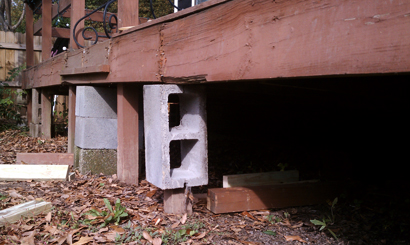 After last week’s three-part series on rental property investing, several readers posed fantastic and hard-hitting questions. I answered most in the ‘comments’ section.
After last week’s three-part series on rental property investing, several readers posed fantastic and hard-hitting questions. I answered most in the ‘comments’ section.
But one question deserved its own post.
How did you come up with the your maintenance cost estimate? I would expect much higher on such a large and old house. You’re probably familiar with the commonly used “50% rule” which states you should prepare for total operating costs to be 50% of your rents. If that’s the case, you’re severely underfunded.
There are dozens of “rules of thumb” to predict how much you’ll spend on a rental property.
The 50% Rule states that all your operating costs – such as property tax, insurance, repairs, maintenance, water and trash service – will equal half of your rental income. Anything that’s left over either goes to the bank – to repay your mortgage – or goes to your pocket.
It’s a popular rule, and it’s one that I completely ignore.
The 50% Rule is based on a variable – the rent – that has absolutely zero relationship to your operating costs. Regardless of what I charge for rent, the rest of my bills — water, trash, insurance and taxes — remain the same.
As a landlord you realize the arbitrary nature of rent. Here’s how rent pricing works: You pick a number out of thin air, advertise it as ‘rent’ and see if anyone bites.
(Okay, it’s not exactly like that. You study the area to see what other places are renting for. But that relates more to cyclical market demand than it does to the cost of dishwashers.)
If no one wants the space, you lower the rent. If people flood your Inbox, you take down the ad, raise the price, and re-post the ad.
I’m oversimplifying. I toured about two dozen rental units in my neighborhood to get an idea of what the competition charges – so the number I set as the rent wasn’t completely out of “thin air.” But ultimately the difference between charging $700 or $800 per month boils down to a combination of market indicators and my personal confidence.
Let’s imagine Angelina Jolie just announced she’s moving to the neighborhood, so everyone wants to live here. I raise the rent $100 on each of the two single-bedroom units and $200 on the three-bedroom unit. That’s an increase of $4,800 a year.
According to the 50% Rule, my predicted “operating costs” should jump by half of that, or by $2,400 a year. But that doesn’t make sense. There’s no relationship between rent and costs.
To put it simply: You charge what the free market allows you to charge. You spend what you’re forced to spend. The two are not related.
That’s why I refuse to sign a contract with any Realtor who gives me a line such as: “Well, I don’t know what the average water bill is, but if it’s high you can just raise the rent to make up for it.”
Hogwash. The free market sets the rent, and the market doesn’t care what my water bill is.
To go back to the beginning of the question – how did I arrive at my operating cost estimates? There are a few ways to do it:
#1: You could take the cost of items that deteriorate over time – a dishwasher, a roof, the water heater, the insulation in the attic – and “spread” that cost, or “amortize” it, to estimate how much you’d pay per year. For example: bathtubs need to be replaced every 12-15 years, so the bathtub’s price per year is X divided by 13 or 14.
#2: You also assume about 5-10 percent of the rental price as the cost of hiring a property manager – since managers do, in fact, often tie their costs to the rental price. (It’s an incentive for them to increase the rent).
#3: DON’T count upfront one-time expenses that are a result of buying a fixer-upper. Maintenance costs will recur forever. Upfront repair costs are part of the “purchase price.”
#4: There’s a rule-of-thumb that says your “maintenance” costs (new paint, new carpet, etc.) are 1 percent of the purchase price per year. I’m dubious about the correlation, but that rule-of-thumb sounds more reasonable than the 50 percent rule.
Before you make any purchase, read this article that explains how to calculate the Cap Rate and the Cash-on-Cash Return.
Want even more information?